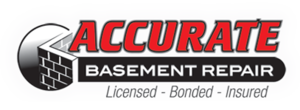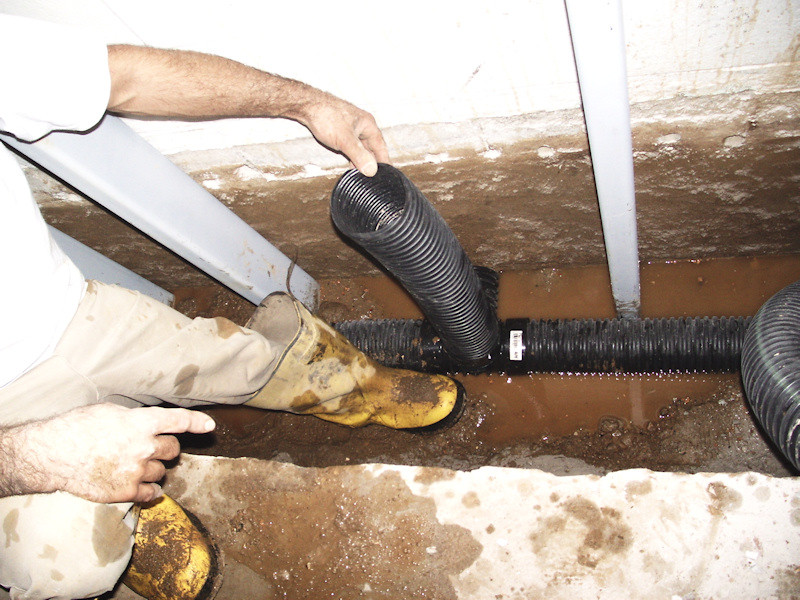Unlock Your Basement's Potential: Essential Guide to Dry, Safe Living Spaces
Milwaukee, United States - February 14, 2024 / Accurate Basement Repair /
Your basement holds great potential as an additional living space or storage area. However, it’s also susceptible to moisture-related issues that can compromise its usability and structural integrity. A well-designed and properly installed basement drainage system is essential to protect your basement from water infiltration and create a dry, functional space. In this article, we will explore the importance of basement drainage systems, the different types available, and how they work to keep your basement dry and safe.
Understanding the Importance of Basement Drainage Systems
Water Intrusion in Basements
Basements are particularly vulnerable to water infiltration due to their below-ground location. Water can enter through various means, including:
- Surface Water: Rainwater runoff and melted snow can seep into the ground and find their way into your basement through cracks, joints, and porous materials.
- Groundwater: High water tables or excessive rainfall can saturate the soil around your foundation, exerting hydrostatic pressure against basement walls and causing water to penetrate.
- Hydrostatic Pressure: As water accumulates around your foundation, it exerts pressure that can lead to cracks, leaks, and structural damage.
- Condensation: Moisture can also enter your basement in the form of condensation, especially in humid climates or poorly ventilated spaces.
The Consequences of Moisture in Basements
Allowing moisture to persist in your basement can lead to a range of problems:
- Mold and Mildew: Damp conditions promote the growth of mold and mildew, which can have adverse effects on air quality and health.
- Structural Damage: Water infiltration can weaken the foundation, cause cracks, and compromise the overall structural integrity of your home.
- Health Risks: Mold, mildew, and poor air quality can contribute to respiratory issues, allergies, and other health concerns.
- Damage to Belongings: Moisture can ruin stored items, including furniture, electronics, and personal belongings.
- Reduced Property Value: A wet basement can decrease the value of your home and make it less appealing to potential buyers.
Types of Basement Drainage Systems
Exterior Drainage Systems
- French Drains: A French drain is a trench filled with gravel and a perforated pipe designed to redirect water away from your foundation. It collects and channels water to a designated discharge point.
- Waterproofing Membranes: These are applied to the exterior foundation walls to create a waterproof barrier that prevents water from entering the basement.
- Exterior Sump Pump: Installed outside the foundation, this type of sump pump helps collect and discharge water away from your basement.
- Weeping Tiles: Perimeter drains, also known as weeping tiles, are installed around the exterior foundation to collect and redirect groundwater away from the basement.
Interior Drainage Systems
- Interior French Drains: Similar to their exterior counterparts, interior French drains are installed beneath the basement floor to collect and channel water toward a sump pump.
- Sump Pump: Sump pumps are a crucial component of basement drainage systems. They collect water from French drains or other channels and pump it away from the basement to prevent flooding.
- Dehumidifiers: Dehumidifiers help control moisture levels by removing excess humidity from the air. This can help reduce condensation and prevent mold growth.
- Interior Waterproofing Membranes: These are applied to the interior surface of basement walls to create a moisture barrier.
How Basement Drainage Systems Work
Exterior Drainage Systems
- French Drains: French drains collect groundwater and surface water and direct it into a drainage pipe, which leads to a suitable discharge point, such as a storm drain or dry well.
- Waterproofing Membranes: These membranes create a waterproof barrier on the exterior foundation walls, preventing water from penetrating.
- Exterior Sump Pump: An exterior sump pump collects water from the French drains and pumps it away from the foundation.
- Weeping Tiles: Perimeter drains collect and redirect groundwater away from the foundation, keeping the soil around the foundation from becoming saturated.
Interior Drainage Systems
- Interior French Drains: Interior French drains are installed beneath the basement floor along the perimeter or in areas prone to water intrusion. Water is collected and directed into a sump pump pit.
- Sump Pump: The sump pump collects water from the interior French drains and pumps it out of the basement through a discharge pipe.
- Dehumidifiers: Dehumidifiers remove excess moisture from the air, helping to control humidity levels and prevent condensation.
- Interior Waterproofing Membranes: Interior waterproofing membranes create a moisture barrier on the interior surface of basement walls, preventing water vapor from entering the basement.
Factors to Consider When Choosing a Basement Drainage System
Severity of the Problem
The extent of your basement moisture issue will influence the type of drainage system you need. Minor dampness may only require interior solutions, while more severe water infiltration may necessitate interior and exterior systems.
Budget Considerations
Your budget will play a role in the type of drainage system you choose. Interior solutions are often less expensive than exterior options, but the severity of the issue and long-term cost savings should be factored in.
Local Climate and Soil Conditions
Consider the climate and soil conditions in your area. High water tables, heavy rainfall, or clay-rich soil may require more robust drainage systems.
Maintenance and Regular Inspection
Proper maintenance and regular inspection are essential for the longevity and effectiveness of your basement drainage system. Key maintenance tasks include:
- Sump Pump Maintenance: Test your sump pump regularly and ensure it functions correctly. Clean the pump and pit as needed.
- Clean Gutters and Downspouts: Keep your gutters and downspouts clear of debris to prevent water from overflowing and saturating the ground near your foundation.
- Inspect Exterior Drainage Components: Check for damage or blockages in French drains, weeping tiles, and discharge pipes.
- Monitor Humidity Levels: Use a hygrometer to monitor humidity levels in your basement. Adjust your dehumidifier as needed.
A basement drainage system is a vital investment for homeowners looking to protect their homes from water infiltration and its associated problems. Whether you choose an exterior or interior solution, the goal is the same: to keep your basement dry, safe, and usable. Regular maintenance and inspection will ensure that your drainage system continues to perform effectively, providing you with peace of mind and a comfortable, moisture-free basement.
Contact the Professionals at Accurate Basement Repair Today! 414-744-6900

Contact Information:
Accurate Basement Repair
3125 E Allerton Ave
Milwaukee, WI 53235
United States
Chris Mancuso
(414) 744-6900
https://www.accuratebasementrepair.com/
Original Source: https://www.accuratebasementrepair.com/media-room/




